If you are looking to keep your ornamental grasses healthy, strong and vibrant – and create even more plants for your landscape for free – then late winter and early spring is the time to jump into action and cut back and divide your grasses!
With all of the different shapes, sizes and colors to choose from, there are ornamental grasses to match any landscaping need. Smaller grass varieties are great for creating edges and borders along pathways or garden spaces, while larger grasses can create a big impact almost anywhere.
Making grasses even more attractive, they also happen to be extremely low maintenance. Not only are they drought and heat-tolerant, they are also rarely bothered by disease or pests, including two of the worst – deer and rabbits.
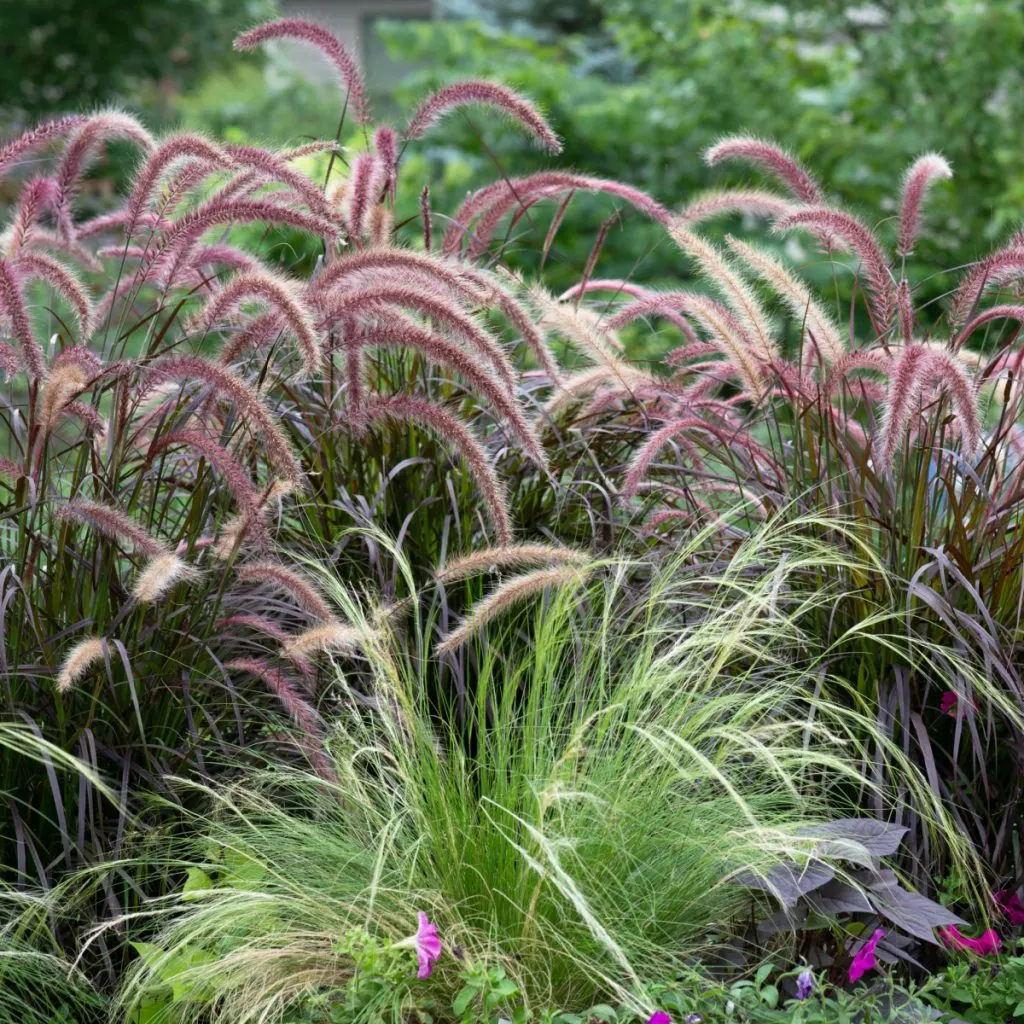
But perhaps best of all, ornamental grasses can be extremely economical. Especially when you consider just how easy they are to divide to create additional plants. In fact, most grasses can be dug up and divided in as little as two to three years to create more plants – which can be a huge saving for homeowners looking to fill their flowerbeds without breaking the bank!
Why To Divide Ornamental Grasses On A Regular Basis
Dividing is not only important as a way to create additional plants for free, it’s also crucial in helping to keep your grasses strong and vibrant. Plants that are allowed to grow for too long begin to get oversized and unruly at their outer edges.
Even more, as they age, the crowns or roots of the grasses begin to die from the center out. As they do, they become weak at the edges and topple over quite easily. Older grass clumps also tend to have a more spotty growth pattern – making them far more unattractive as they grow.
But by simply dividing every two to four years, these issues are all but eliminated. And, of course, with the added bonus of additional plants as well!
When To Cut Back & Divide Ornamental Grasses
The good news is that digging up and dividing your grasses couldn’t be easier. Especially when you do so on a regular basis every few years.
Although ornamental grasses can be cut back at any point from early fall to late spring, when it comes to digging them up and dividing overgrown crowns, you need to wait until the plants have gone dormant. And that is exactly why late winter to early spring is the best time for digging and dividing.
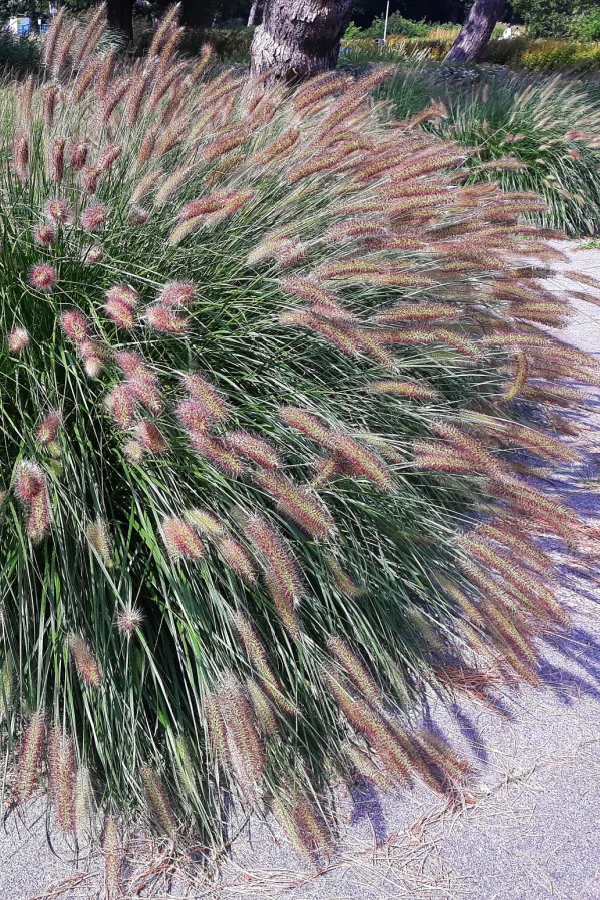
At this point, the grasses are still dormant. Because of that, it’s not only safe to cut them back but to also divide and transplant them as well. Even better, there is no need or worry of having to water new divisions. You just simply plant and wait for spring to arrive to watch them take off and grow!
How To Divide & Transplant Ornamental Grasses In Late Winter / Early Spring
Cutting Back
If you did not cut your grasses back in the fall, you will need to perform the chore before you can divide and transplant. To do so, cut back the entire clump so that only a few inches of the grass stems remain above the soil line.
If grasses are larger and older clumps, this can actually be a tough task. A good pair of hedge shears usually will do the job in short order. However, when dealing with large clumps of large grass varieties, a powered set of hedge shears or even a chainsaw is best to make cutting back easier. Affiliate Product link: WORKPRO Cordless Grass Shear & Shrub Trimmer
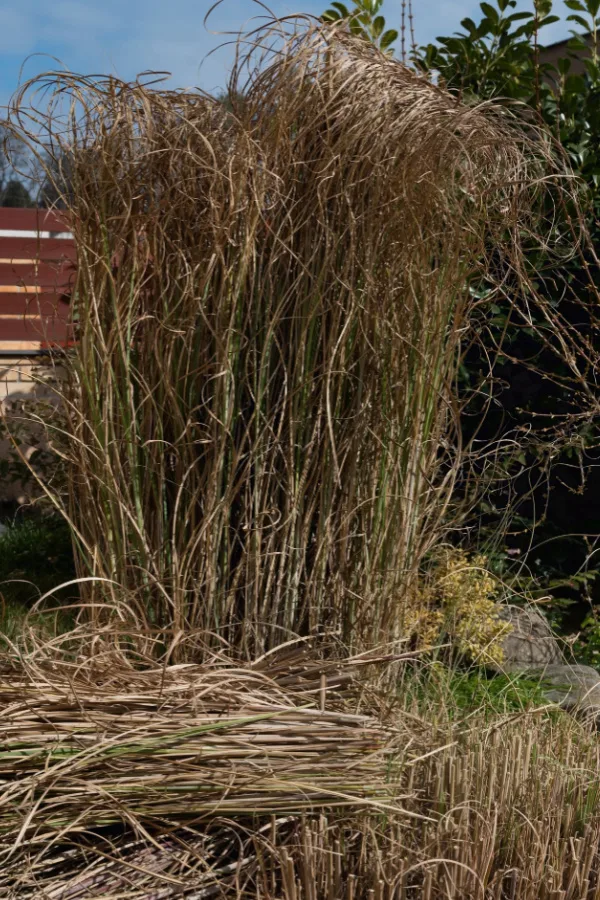
Always wear gloves, protective glasses, a long sleeved shirt, and pants when cutting ornamental grasses back. The individual grass blades can be very sharp and cut exposed skin quite easily. They can also leave welts and rashes wherever they come in contact with your skin.
Digging Out The Root Ball – How To Cut Back, Divide & Transplant Ornamental Grasses In Early Spring or Late Winter
Once your grass is cut back, it’s time to remove the root ball. To dig out the clump of roots, you will need a strong, sturdy shovel with a sharp cutting edge. You also might want to have a pick (mattock) or an axe on hand as well. Especially if you happen to be dealing with larger and older root sections.
Start by placing the blade of your shovel about an inch behind the outer edge of the clump. Cut down as far as the shovel will dig, trying to go at least 6 to 8 inches into the ground.
Work your way all around the circumference of the plant, continuing to cut down 6 to 8 inches. Once you have cut all the way around, use your shovel to dig down under the plant and try to pop it out of its planting space.
Most ornamental grass roots will be near the top four to five inches of the soil line. Occasionally, they will have a bigger center root that can be difficult to sometime pop out. This is where the pick/mattock tool can come in handy to help pry the grass clump from the ground.
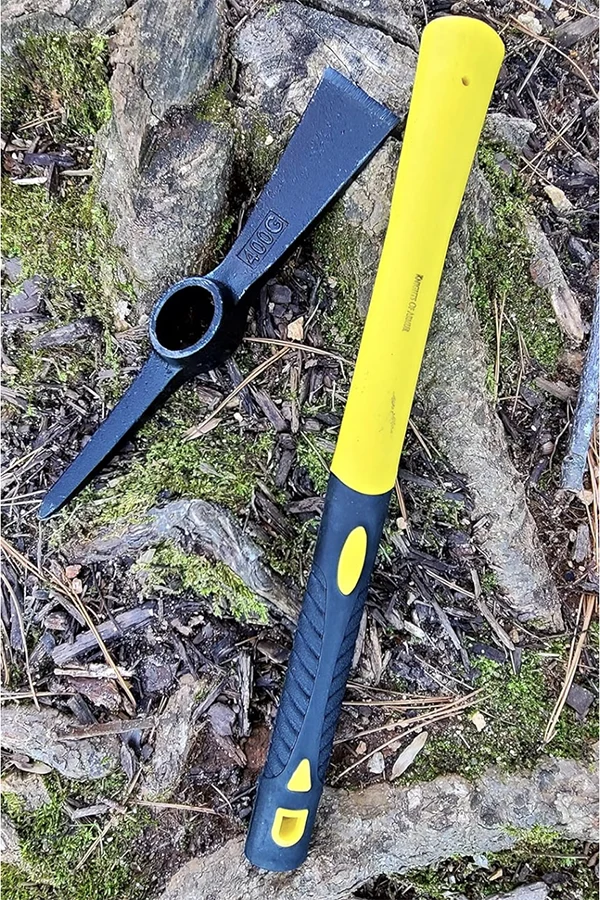
For older and larger plants, you may need to dig out the root ball in sections. Simply slice out a section as you would a piece of pie. Each piece you pop out can then become a new plant. Affiliate Product Link: Knights Of Armur Weeding Mattock
Dividing The Grass Clumps – How To Cut Back, Divide & Transplant Ornamental Grasses In Early Spring or Late Winter
Once you have the clump and roots out of the ground, it’s time to divide them into new plants. With transplants, the smaller you cut the transplant section, the smaller your grass will be in the first year of growth.
How small or large you cut really depends on your needs. If you want more mature plants during the first year of growth, leave the sections larger. Remember that the larger the transplant is, the more often you will have to divide it to keep it under control in the future.
The easiest way to divide a large grass clump is to first turn it over so that the bottom of the roots are facing up. This makes it easier to slice through with your shovel as there are no hard grass edges to cut through first. This also helps you more easily see the size of the root when cutting to get the size you are looking for.

If you happen to be dealing with grass roots that are extremely large and tough, the sharp end of an ax can make quick work of slicing new divisions. Usually, one hard chop will separate the clump with ease. Don’t worry about harming the plant – ornamental grass roots are extremely durable and recover quickly to grow into new plants.
Finally, when cutting new sections, be sure to only select the outer edge areas of the original root ball for new transplants. Avoid the center area of the original clump since this is where the plant dies out as it ages. It can be chopped up and placed in a compost pile, but it is not good to use for creating new plants.
Transplanting – How To Cut Back, Divide & Transplant Ornamental Grasses In Early Spring or Late Winter
One of the easiest parts of dividing and creating new starts of ornamental grass is the planting process. Ornamental grasses are extremely hardy and require very little to sprout and grow again. In fact, they can handle a frost or hard freeze with zero issues.
This is exactly why as long as your ground is not frozen in late winter, you can dig, divide and transplant without worry.
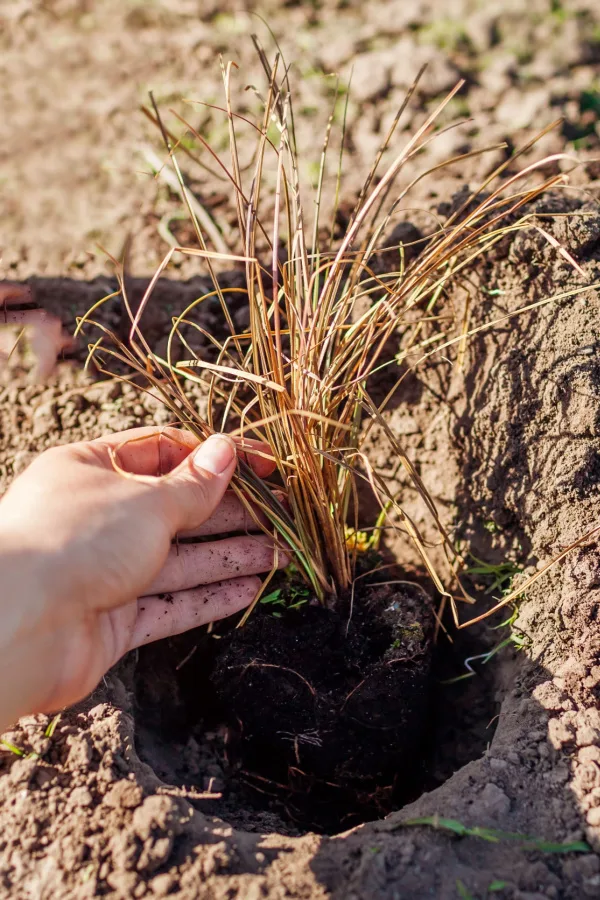
To replant, simply dig a hole twice the size of the circumference and just below the depth of the transplant. Mix in a bit of compost to the planting hole, water, and cover so that the plant’s crown is slightly below the soil line.
As soon as the temperatures begin to warm in late spring, new growth will begin to grow from the crown. Before you know it, you will have a landscape full of free plants! For more on grass varieties to plant in your landscape, check out our article: The Best Ornamental Grass Varieties To Plant For Easy Care & Big Interest.
Follow Our Facebook Page For Great Gardening Tips And Advice! This Is My Garden Facebook Page
This Is My Garden is a garden website created by gardeners, for gardeners. Jim and Mary Competti have been writing gardening, DIY and recipe articles and books and speaking for over 15 years from their 46 acre Ohio farm. They publish three articles every week, 52 weeks a year. Sign up today to follow via email, or follow along!
